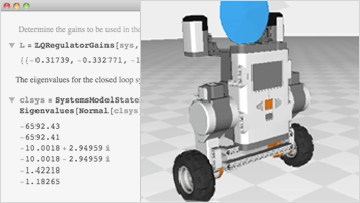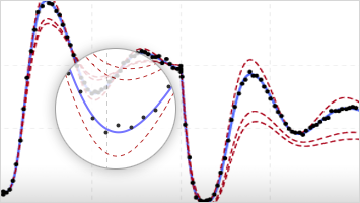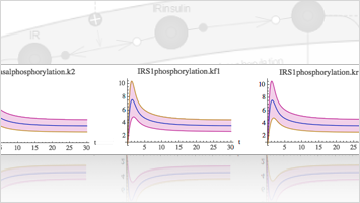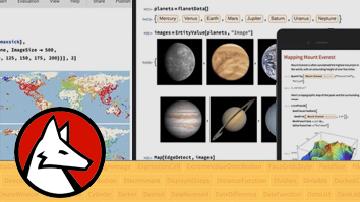Model Uncertainties
Understand the consequences of uncertainties in model inputs and parameters, such as component variability in engineering systems and varying assumptions in social systems.

Understand the consequences of uncertainties in model inputs and parameters, such as component variability in engineering systems and varying assumptions in social systems.

Design controllers for your systems. A full suite of control systems features is built into Wolfram Language, including stability analysis, visualization and controller design. More
Automatically linearize models into standard state-space representations or as transfer functions. Built-in functions allow you to tune PID controllers and create linear–quadratic regulators and state estimators.Less

Explore the parameter space by running System Modeler simulations from Wolfram Language. More
Calibrate model parameters against real-world data using Wolfram Language's optimization features, and programmatically insert them back into the model.Less

Use Wolfram Language to help plan the geometry of 3D mechanical systems, prototype equation-based custom components and use built-in optimization routines to find the optimal parameters and inputs.More
Once the model is assembled in System Modeler, use sliders and other interactive elements to tune your models using manual exploration.Less

Perform FFT analysis on output signals and use the result to design dampers and filters. Stimulate your models with any input signal to find resonance peaks. More
Automatically convert a model into a linear time-invariant system to further analyze the system.Less

Simulate models while plotting the sensitivity bands of system variables with respect to specified parameters. Sensitivity band plotting is built in. More
Discover which parameters have the greatest effect on system behavior, enabling you to increase model robustness, reduce model complexity and design optimal experiments.Less

Wolfram Language's complete suite for reliability analysis, with functionality for reliability block diagrams, fault trees and importance measures, can be used with models. More
Components and models can be annotated with reliability distributions, allowing you to test model robustness to design criteria by formal statistical methods.Less

Perform your own symbolic and numerical computations by accessing the full model equations and simulation results of your models. Bring the full power of Wolfram Language to your model analysis.More
Use built-in functions for linearizing models, deploying in the cloud, training and integration of neural nets, and more.Less

Wolfram Language is a programming language for expressing things in a computational way—and for capturing computational ways of thinking about things.MoreLess
Try
Buy
System Modeler is available in English
and Japanese
on Windows, macOS & Linux »
Questions? Comments? Contact a Wolfram expert »